Bar graphs, also known as bar charts, are visual tools for presenting categorical data using horizontal bars across two axes. They are effective in comparing quantities, frequencies, or other measures for different categories.
In a bar chart, categories are plotted along the horizontal (x) axis, while their corresponding values are represented by the lengths of bars along the vertical (y) axis.
Distinguishing Between Bar Graphs and Histograms
Although bar charts and histograms may appear similar due to their use of bars to represent data, they serve different purposes and have distinct characteristics.
- Bar graphs display data with horizontal bars, whereas histograms (also known as column charts in Excel) use vertical bars.
- Histograms illustrate the frequency distribution of continuous numerical data, while bar charts are ideal for comparing discrete categories.
- Histograms are suited for continuous variables such as height, weight, temperature, or length. Bar charts compare discrete variables like the number of people in different classes, types of movies, or item counts.
Histogram/Column Chart Example:

Bar Chart Example:

Creating a Bar Chart in Excel
Constructing a bar chart in Microsoft Excel is a straightforward process. Follow these steps to create your chart.
Step 1: Begin by entering your data into an Excel worksheet. For a bar chart, you need at least two columns: one for the categories (e.g., book series names) and one or more for the values associated with those categories (e.g., copies sold, copies in stock).
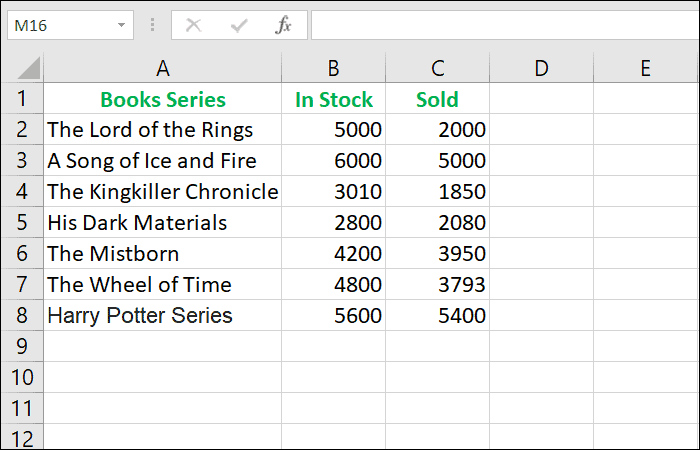
Each additional column of dependent variables will add another set of bars to your chart, allowing for comparison across multiple data series.
Step 2: Select the range of data you wish to visualize, including the column headers.
Step 3: Navigate to the Insert tab on the Excel ribbon. In the Charts group, click on the Insert Column or Bar Chart icon to open the chart options.
Step 4: Hover over the chart types to see descriptions and previews of how your data will appear. Choose a bar chart style from the available 2-D or 3-D options. For this example, we'll select the standard 2-D Clustered Bar chart.

Step 5: Once selected, Excel will insert the bar chart into your worksheet, displaying your data in a visual format.

Each data series (column of numerical values) in your dataset will be represented by a set of bars in the chart, with different colors distinguishing each series.
Customizing Your Bar Chart
After creating the chart, you can enhance it by adjusting elements like the title, layout, styles, colors, and more. Excel offers various formatting tools accessible through the Design and Format tabs, as well as through context menus and floating buttons.
Adding and Editing the Chart Title
Step 1: Click on the chart title text box to select it.
Step 2: Click again to place the cursor inside the text box.
Step 3: Delete the default text and enter a new title that reflects the content of your chart.
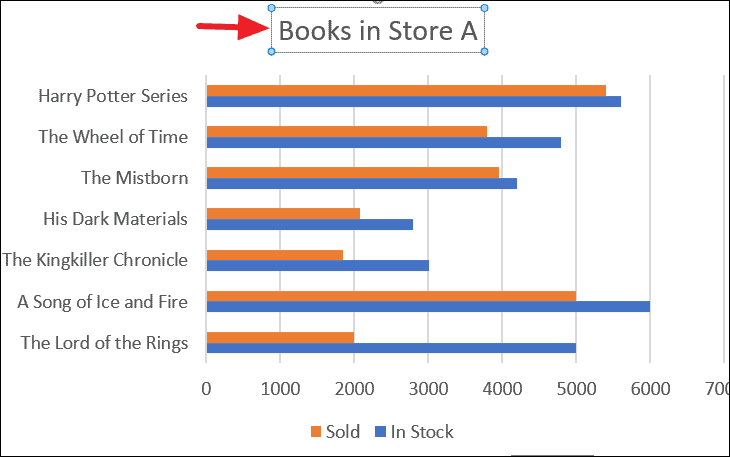
Modifying the Chart Type
Step 1: Select your existing chart.
Step 2: Go to the Insert tab and choose a new chart type from the Charts group. Alternatively, right-click on the chart and select Change Chart Type from the context menu.
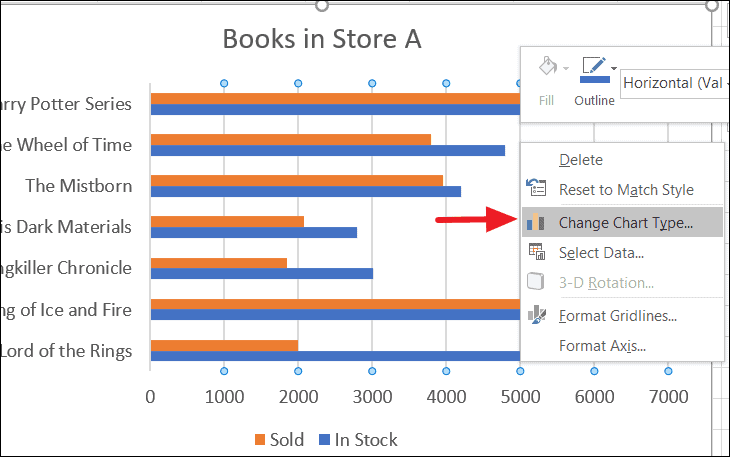
Step 3: In the Change Chart Type dialog box, select the desired chart type.
Step 4: Click OK to apply the new chart type to your data.
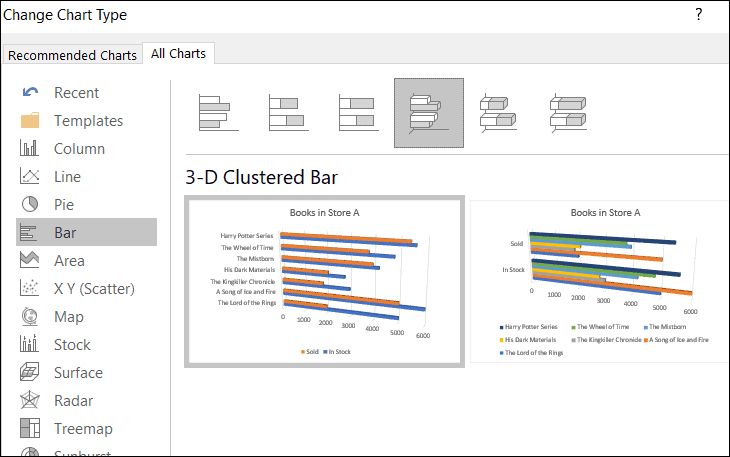
Adjusting Chart Layout and Style
Step 1: To change the layout of your chart, select the chart and go to the Design tab.
Step 2: Click the Quick Layout button in the Chart Layouts group.
Step 3: Choose a layout from the dropdown menu that best suits your needs.
Step 4: To change the chart style, select a style from the Chart Styles group on the same tab.

Changing Chart Colors
Step 1: Select your chart, then navigate to the Design tab.
Step 2: Click on the Change Colors button in the Chart Styles group.
Step 3: Choose a color palette from the dropdown menu. The chart will update to reflect your selection.
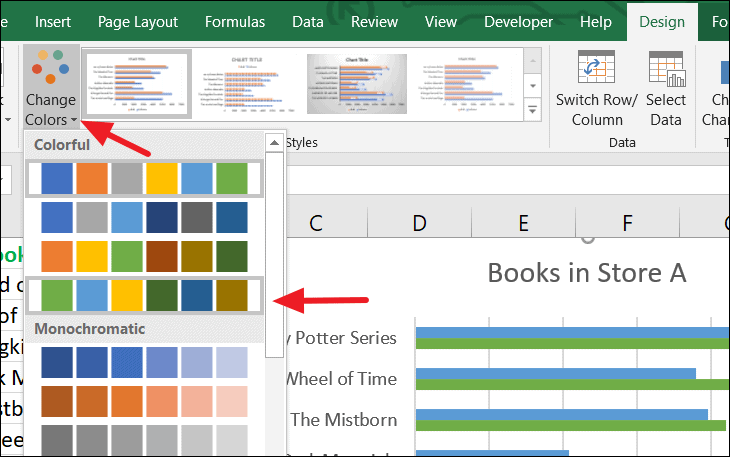
Step 4: Alternatively, use the floating Chart Styles button that appears next to your chart to quickly change colors and styles.

Step 5: To change the color of an individual data series, click on the series in the chart to select it.
Step 6: Right-click on the selected data series and choose Format Data Series from the context menu.

Step 7: In the Format Data Series pane, click on the Fill & Line tab.
Step 8: Expand the Fill options, then click on the Color dropdown and select your desired color.
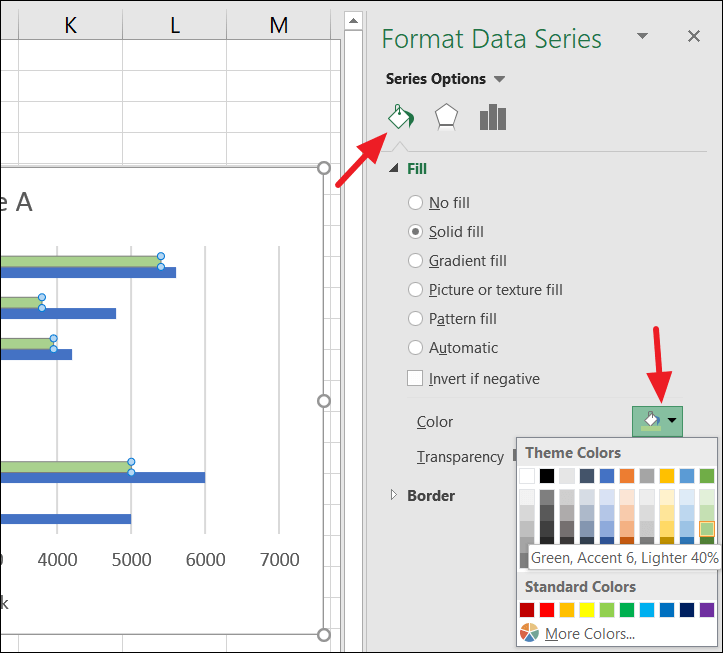
Switching the X and Y Axes
Step 1: To switch the data between the horizontal and vertical axes, select your chart.
Step 2: Go to the Design tab on the ribbon.
Step 3: Click on Switch Row/Column in the Data group.
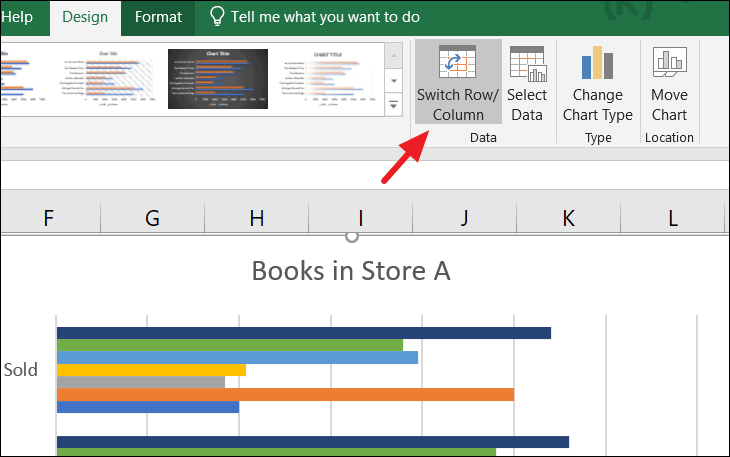
The chart will update to reflect the new data orientation.

Modifying Gridlines
Gridlines help in aligning the data points with their corresponding values, enhancing the readability of the chart.
Step 1: Click on your chart to select it.
Step 2: Click on the Chart Elements button (the plus sign) that appears next to the chart.
Step 3: Hover over the Gridlines option.
Step 4: Click the arrow next to Gridlines to expand the options.
Step 5: Select the types of gridlines you wish to display, such as primary major horizontal or vertical gridlines.

Step 6: For additional formatting options, click on More Options... to open the Format Gridlines pane.
If you wish to remove gridlines, simply uncheck the Gridlines option in the Chart Elements menu.
Adding Axis Titles
Axis titles provide context for the data displayed on each axis, making your chart more understandable.
Step 1: Select your chart to activate the Chart Elements button.
Step 2: Click on the Chart Elements button (the plus sign) next to the chart.
Step 3: Check the Axis Titles box to add axis titles to your chart.
Step 4: To specify which axis title to add, click the arrow next to Axis Titles and select Primary Horizontal or Primary Vertical.
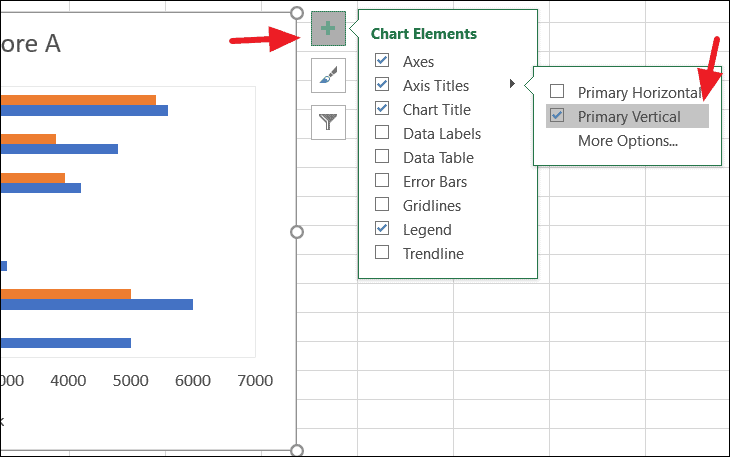
Step 5: A text box labeled "Axis Title" will appear on the selected axis. Click on it to select it.
Step 6: Click again to place the cursor inside the text box and enter a descriptive title.

Step 7: To format the axis title further, right-click on the title and select Format Axis Title. Use the formatting options in the pane that appears to adjust the font, color, and style.
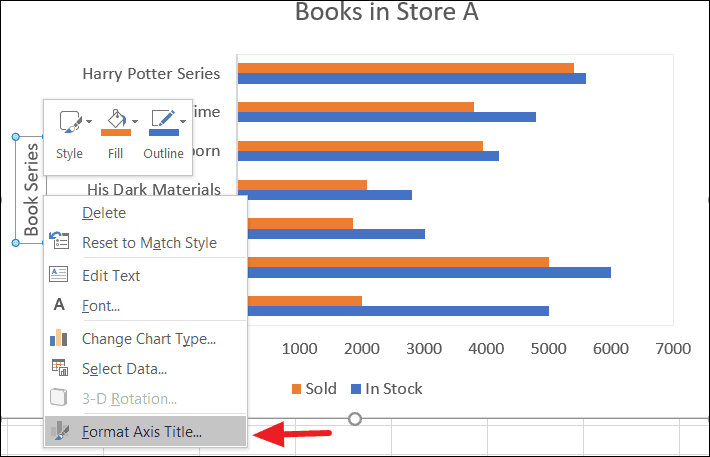
Relocating Your Bar Chart
You may want to move your chart to a different sheet or to a new sheet within your workbook.
Step 1: Click on your chart to select it.
Step 2: Right-click within the chart area and choose Move Chart from the context menu. Alternatively, go to the Design tab and click on the Move Chart button.
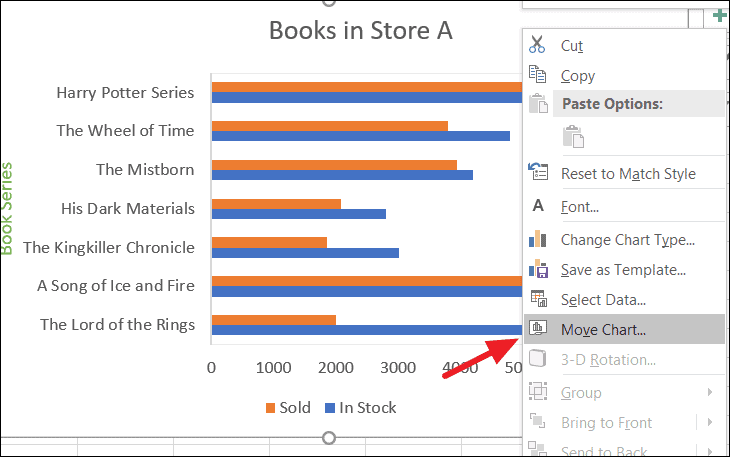
Step 3: In the Move Chart dialog box, select New Sheet to place the chart on a new worksheet, or select Object in and choose an existing worksheet from the dropdown menu.
Step 4: Click OK to apply your changes.
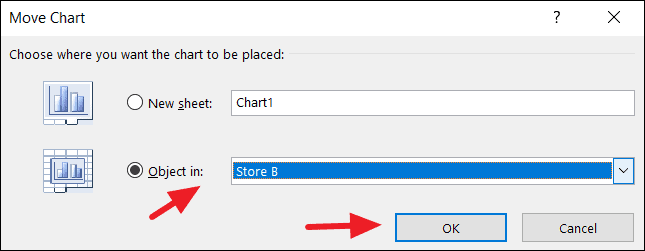
With these steps, you can create and customize bar charts in Excel to effectively represent and analyze your categorical data.


